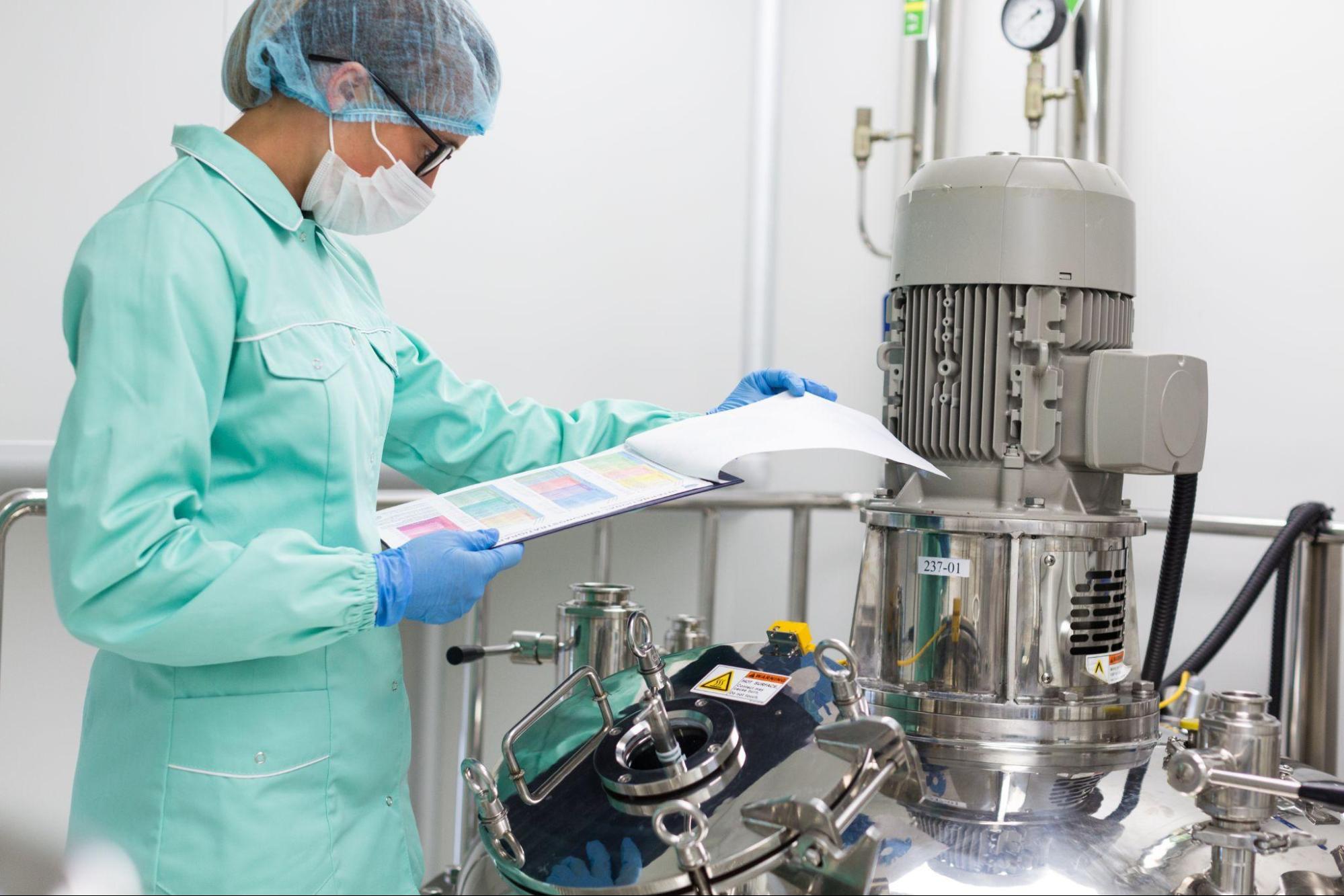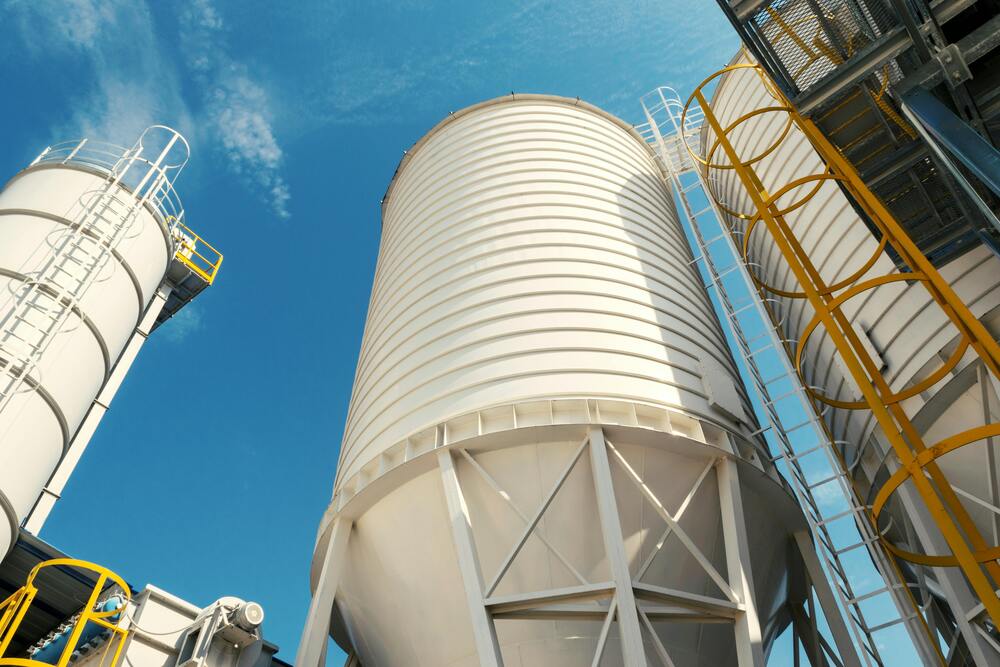Pneumatic equipment has become indispensable in modern manufacturing, becoming a cost-effective alternative to hydraulic and electrical systems, using compressed air to power machinery. By converting energy stored in compressed air into mechanical force, pneumatic systems offer a highly versatile solution for various industrial applications.
But to fully maximise the capabilities of your pneumatic equipment, it’s important to be aware of the different components that help make these systems work and deliver reliable, consistent performance. These are the basic components of what you will typically find in a pneumatic conveying system:
1. Air Compressor
The air compressor is at the core of any pneumatic system and is responsible for compressing atmospheric air to supply the system with the energy needed to drive machinery. It draws in ambient air, compresses it to increase its pressure, and stores it for use throughout the pneumatic system.
2. Air Reservoir
An air reservoir, or air tank, is essential for storing compressed air, ensuring a constant supply during fluctuations in demand. In any pneumatic system, air flow requirements can vary, which can strain the compressor if it constantly runs to meet the demands. The air reservoir helps balance this by storing excess compressed air and releasing it when needed, allowing for a more consistent flow.
3. FRL (Filter-Regulator-Lubricator)
The FRL unit is a critical component in maintaining the quality of air used in pneumatic systems. This three-part device serves several important functions:
- Filter: The filter removes particulate matter, moisture, and harmful vapours from the air, ensuring that only clean air passes through the system. Without proper filtration, contaminants can cause premature wear on components, leading to increased maintenance costs and reduced efficiency.
- Regulator: The regulator controls the air pressure at the point of use, preventing excess pressure from damaging sensitive equipment. By maintaining consistent pressure, the regulator helps optimise the performance of the pneumatic system, ensuring it runs efficiently.
- Lubricator: In some applications, the lubricator adds a fine mist of oil to the compressed air, which helps extend the life of pneumatic valves and actuators by reducing friction. This is particularly useful in systems that rely on heavy mechanical movements.
For safety reasons, many FRL units include a shut-off valve, allowing operators to quickly stop airflow during maintenance or in case of an emergency.
4. Pneumatic Valves
Pneumatic valves control the direction, flow, and pressure of the compressed air within a system. They are responsible for opening, closing, or partially obstructing pathways to regulate the airflow, ensuring that each pneumatic component receives the correct amount of air for optimal operation.
There are several types of pneumatic valves used in manufacturing:
- Directional control valves: These valves direct the flow of compressed air into different paths.
- Pressure control valves: They maintain or adjust the pressure within the pneumatic system.
- Flow control valves: Valves such as these regulate the rate of airflow to specific components.
Without properly functioning valves, a pneumatic system cannot control the mechanical actions required for tasks such as clamping, lifting, or moving products down a conveyor. Therefore, choosing the right valve is critical for smooth and reliable operation.
5. Pneumatic Circuit
A pneumatic circuit is akin to an electronic circuit but uses piping, tubing, and fittings instead of wires. The compressed air flows through this network of pipes or tubes and valves to power various actuators and machinery. The design of the pneumatic circuit is crucial for the system’s safety, performance, and longevity. For manufacturing companies, investing in a robust pneumatic circuit can reduce maintenance costs and extend the lifespan of equipment.
6. Pneumatic Cylinders/Actuators
Pneumatic cylinders or actuators convert compressed air into mechanical motion, making them one of the most important components in a pneumatic conveying system. Actuators come in various configurations, including:
- Single-acting cylinders: These use air pressure to move in one direction and a spring to return to the original position.
- Double-acting cylinders: These use air pressure to move in both directions, providing more control over movement.
- Rotary actuators: These convert compressed air into rotary motion instead of linear.
Manufacturers can choose the appropriate type of actuator based on the specific mechanical movement required for their operations. For example, in milk powder processing, pneumatic actuators might control conveyor belts, valves, or hoppers to ensure smooth and hygienic material handling.
What to Consider When Getting Pneumatic Components
When selecting pneumatic components, manufacturing companies must consider several factors to ensure the system is efficient, reliable, and cost-effective:
- Component quality and reliability: Always source pneumatic components from reputable suppliers to guarantee high-quality materials and durability.
- Energy efficiency: Choose components that contribute to energy-efficient operation. For example, well-designed air compressors and properly regulated pressure levels can help reduce energy consumption, lowering operating costs over time.
- Cost considerations: While initial costs are important, manufacturers should also factor in the total cost of ownership, including maintenance, downtime, and energy usage.
- Maintenance and serviceability: Opt for components that are easy to maintain and service, as this will reduce downtime and extend the lifespan of the system. Components with modular designs or easy access points for cleaning and replacement are ideal for minimising operational disruptions.
If You Need Help with Your Pneumatic Systems, Partner with Pneu Powders Systems
For businesses looking to design or upgrade their pneumatic conveying systems, Pneu Powders Systems has the expertise you need. We can also help you find quality components, such as valves, air compressors, tubes, and more, tailored to your specific application and requirements. Whether you’re involved in milk powder processing or food and beverage manufacturing, we can help ensure that your pneumatic system is reliable, efficient, and cost-effective. Partner with pneumatic equipment suppliers like Pneu Powders Systems.
For more information about pneumatic conveying systems, check out the pros and cons of pneumatic conveying and how pneumatic systems can enhance dairy product quality.





